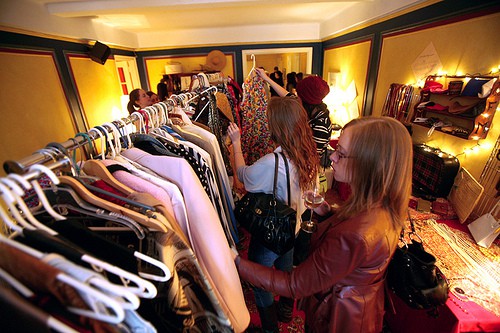
Hello and happy Tuesday, everyone!!!
Since mid August I’ve been working as the manager of A Little Wicked, a vintage boutique found between the East Village and Lower East Side neighborhoods of Manhattan.
I discovered my true love for vintage through the act of selling fabulous pieces to the women of NYC when Sammy Davis Vintage was first born as a retail business.
During the spring/summer of 2009, I sold my curated collection at flea markets and pop up sales around the city. Later that fall, I opened a showroom space in the Upper East Side where I hosted private sales and styling sessions.
I am at my happiest when I’m working with someone to find the best vintage piece for her — whether it be just to add a great piece to her wardrobe or shopping a specific look with an event in mind to wear it to.
While my experience clearly speaks to both my talents and passion as both a vintage advocate and seller, there is always MORE to learn — and I have a lifetime to keep learning it! When it comes to selling vintage in a bonafide brick & mortar store smack in the middle of downtown Manhattan, there is always something new to be experienced and added to one’s vintage selling tool belt.
My time at A Little Wicked has re-inspired my desires to give every woman the confidence to shop vintage fashion for herself, and it’s also re-inspired me to be a friendly face in the store and a truly caring, understanding and compassionate salesperson.
Many of you have purchased vintage from a brick & mortar store or an online vintage store. Some of you may even own and operate your own stores both physical or digital. Whatever the matter, I think you’ll enjoy today’s post not only for the tidbits of wisdom I’ve learned firsthand as a vintage fashion seller, but as an individual who wishes only the best of fashionable feelings to be felt by her clients.
I believe it’s of the utmost importance to first instill trust between you and your customer. This is the driving emotional investment that allows you — in those precious minutes of style connection — to truly sell vintage with love in your heart. Plus, it’s important to understand the nuances behind how to price vintage, so that you can present the true value of a piece to vintage lovers new and returning.
Keep reading after the jump to learn more on the 5 key suggestions I have to selling vintage successfully in a brick & mortar store!
The other day in conversation with a friend I said, “I’d be happy working for retail boutiques the rest of my life.”
And this vintage lovers, I truly mean! It’s so important for my health of mind & soul to be able to connect with people in positive ways on a daily basis. Most importantly, the opportunity to do this through positive STYLE & SELF is what truly drives my personal inspiration to do what I do with a smile of gratefulness.
If you’re in NYC, I’d love to style in vintage at A Little Wicked soon! You know how to reach me ;-) Say hello on Twitter, Facebook, YouTube or Email me at [email protected]
Special shout outs to a few lovely NYCers who received the Sammy Davis Vintage styling treatment already! Samantha of OMO Writes experienced the joys of vintage fur & fun, while Megan of Meg’s Mumbo had style success trying on an array of summer pieces and accessories!
Here’s to vintage selling AND buying success for all vintage lovers everywhere!!
xx, SD
TIP #1: BREAK THE ICE
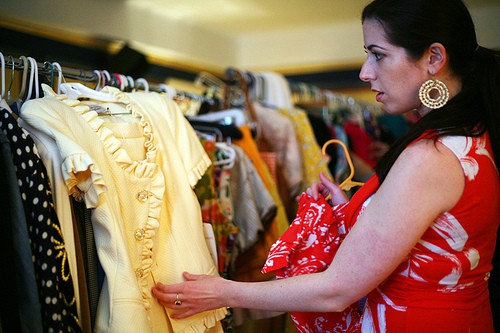
THE TIP: Break the ice between you and the customer!
When a customer first enters the store, be sure to greet the with a cheery “Hello! Happy [insert day of week here]” Just like I greet my readers with a friendly hello at the beginning of each post, vintage sellers should personally greet whomever enters the store.
If you are feeling particularly silly, greet customers with a declaration of fun and joy that shows your happiness and sincerity. Some days I say, “Hello and welcome to A Little Wicked! We’re so happy to have you here!”
WHY IT HELPS: A personal greeting breaks down barriers of communication between you and the customer. I can’t tell you how many times my friendly hello has provoked the customer to walk right up to me and ask for my advice on something they’re looking to purchase.
The truth is that many shop girls & guys refrain from direct verbal connection with the customer right away because they feel it’s best to let that customer “be” in their shopping element. But I disagree with this because I feel that the customer will actually leave your store if they feel you are too quiet and because of your silence seem standoffish.
When you show the customer that you are there to be a friendly face, they look at the experience of shopping in the boutique as a fun and fulfilling one instead of just a casual drop-by. Even if they don’t buy anything in that visit, they’ll be inspired to return again because they left with positive feelings that they’ll want to re-experience in their next vintage shopping trip.
DON’T WORRY IF: The customer doesn’t positively respond to your greeting. This can be the most awkward part, I admit: You are incrediably chirpy and the person you’ve greeted hardly says hello or even worse, responds with a confused greeting back because they aren’t used to such kindness from a stranger.
Their lack of response or confusion is nothing to worry about. You’ve done your duties as a vintage seller looking to establish initial connection. Sometimes the customer may be a tourist [particularly in the case of a NYC boutique] and doesn’t speak English very well.
The friendly tone of your voice is all that matters, and because the customer will pick up on this they will be comforted knowing they can communicate freely with you if they so choose.
TIP #2: ANALYZE THEIR STYLE
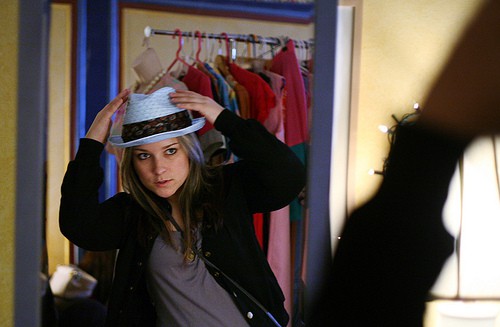
THE TIP: As the customer is fingering through the racks of your boutique, give their outfit an up & down examination and their style vibe a conclusive analysis.
The secret to this outfit analysis is to give yourself a surface-level understanding of what that customer may be comfortable trying on in your store. That way, you can walk over to one of your racks and pull out a piece which you think speaks to their personal style tastes.
I can’t tell you how many times I’ve done this and the customer’s eyes literally light up seeing that piece in my hand which resembles a look or color/pattern/texture they are already wearing.
Imagine this scenario: A young mom wearing LuluLemon yoga wear walks into the store. You know she’s a young mom because she just mentioned that she’s never been in the store before but always walks by to pick up her toddler from preschool. Guesstimate of her age? Early 30s. Guesstimate of her style based on her outfit? Comfortable and chic, with no qualms about dropping the dough [she is wearing LuluLemon here!]
Pull out a few gorgeous maxi dresses and wrap dresses. Think vintage DVF or that awesome pleated maxi with a flattering empire waist. If she’s wearing all black, pull classic patterns so you “aim low” first. If she seems attracted to those pieces, try a few louder patterns as “wild cards.”
This is actually a statement I use often to explain why I am suggesting something to someone they may never have considered before. It takes off the pressure, but I guarantee these “wild cards” will out perform some of the standard faire the customer may have thought they’d love on their bodies.
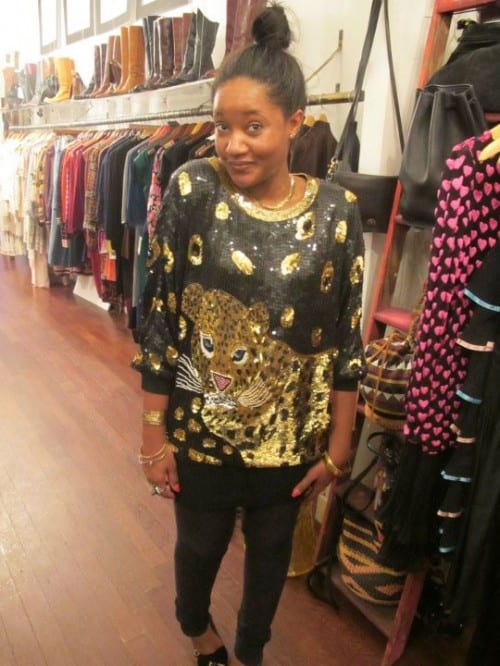
WHY IT HELPS: Vintage shopping is not easy! Even for experienced vintage lovers like us, it relieves some of the shopping stress when we know our “style” is easy to find in the racks.
This is not always the case, though, and especially for notice vintage shoppers, discovering the pieces we really want to try on and consider purchasing can be time consuming.
Speaking of novice vintage shoppers, many of the customers who enter A Little Wicked are first timers into the store itself. That means they aren’t familiar with the merchandising, therefore it really benefits them to see a few pieces in the store that they can connect with. As you pull out their “tastes,” they feel more comfortable being in that store to begin with. They feel as if “they belong.”
Think of it this way: Growing up, there may have been a store you wanted to shop at but you just didn’t feel “cool enough” to step into. Hollister is my example. With it’s gorgeous sales associates, blaring music and expensive surf-wear, at age 15 stepping foot into Hollister was like giving a speech in front of a 100 people.
This can be how first-timers to a vintage store feel — like they’re stepping onto a stage and they’re not sure how they’ll perform. If you can make them feel at ease with a few pieces that they like, their excitement at seeing those pieces will relax them and also inspire them to communicate more openly with you about their style tastes, personal lives and what they may be shopping for.
DON’T WORRY IF: You pull out a piece that they turn their nose up or shake their head to. Even if your style analysis has missed the mark, making that “first move” may provoke them to explain what it is they do like. Thus, you have more information to work with which may give you the opportunity to suggest a better-suited piece.
TIP #3: BE A SHOPPING BUDDY
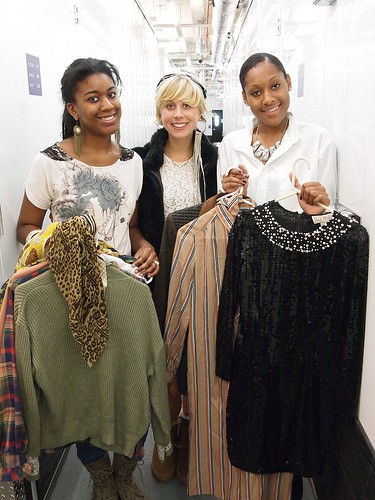
THE TIP: As much as you can act out the role of “shopping buddy” and not “shop salesgirl,” the better your performance as a truly talented vintage seller.
While it’s important to maintain an air of authority so that you can maintain control over your store, remember that part of the boutique experience is feeling that you are being taken care of and most importantly: having fun.
When the customer is in the changing room trying on things, ask her about her life. Where does she live? What does she do? Where is she going on vacation in a few weeks?
Using her answers to a few key questions, you can begin to connect your life to hers. If she says that she’s visiting the Bahamas for her honeymoon and needs a few awesome dresses for the occasion, share a quick anecdote on your experience vacationing in the Bahamas and what you wore. Well, only say that if it’s true — the secret is to find “common ground” between you and the customer. That way she begins to view you as a friend and trust your style suggestions more and more.
WHY IT HELPS: As you become verbally closer to your customer, she feels less intimidated by your “wild card choices” because you’ve created a bridge of connection that wasn’t there before. She feels less INCLINED to DECLINE your expertise.
Imagine that a telemarketer calls you and says, “I have this great offer for you! You are going to save all of this money! I’ve experienced it myself and I promise you it’s the REAL DEAL!”
Are you going to trust this complete stranger, despite their enthusiastic claims that “they have the best opportunity for you EVER?!” Um … probably not!
But imagine if that same telemarketer was your friend. In fact, it was a friend from college you lost touch with but whom you remember fondly. They call you and say, “Hey there! I’m working for a great company now and you won’t believe the great deal with have up for grabs. I’ve personally experienced it myself and would love to tell you more about it if you have a few minutes to hear me out? I think you’re going to like what I have to say!”
Sounds much better, right? You trust the language of this person not only because you know them beforehand, but because they’ve chosen language that friendlier and more sincere. The telemarketer you don’t know HAS to be over enthused because they have nothing else to say to you — they can’t personalize their pitch to you because they just know nothing about you. You are nothing but a number.
Look at your customers as “numbers” who can be converted into “friends.” Whether the person is customer #1 or #100 of the day when entering the store, if they leave the store as “friend for vintage life,” you’ve succeeded at the true numbers game of being a successful salesperson.
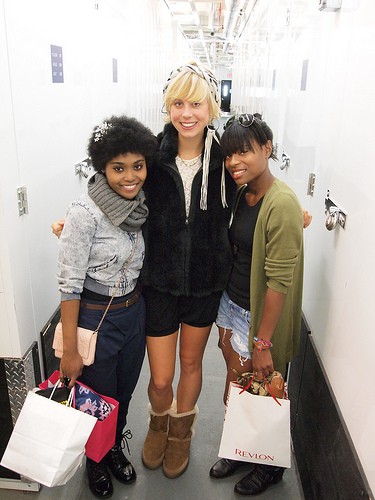
DON’T WORRY IF: Your invitation to be friendly with the customer is declined. Unfortunately, not everyone shopping is looking for a new friend. But that doesn’t mean you can’t at least try to make the connection, and remember that some ice takes longer to melt than others.
The very act of putting out positive energy may still be returned. Even though I don’t consider myself “friends” with the bodega owner on my block, because he always smiles and calls me “sweetie,” I want to buy my milk and bananas from him versus the other guy. Sure, he may not know how old I am or what I do for a living, and I have no idea who he is or where he’s from, but his small gesture of connection is all it takes to inspire my purchase.
The same can be said for your small gestures to connect with your customers — while they may not jump on the opportunity to share their life stories, they may subconsciously feel better buying great vintage fashion from you.
TIP #4: SUGGEST, SUGGEST, SUGGEST
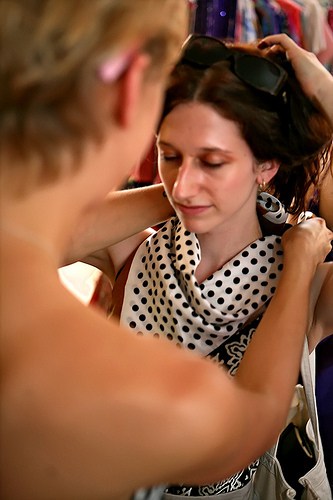
THE TIP: Play those wild cards, vintage sellers!
Based on my personal experiences, the wild card suggestions are the true winners. While there are the anomaly vintage customers who walk in, shop and 10 minutes later walk out with $100 of purchases in hand, the reality is that most women need a bit of nudging to give fabulous pieces of vintage a shot.
Tips #2 and #3 lay the foundation for successfully pitching wild card ideas. As you analyze their style and get to know them personally, you’ll be inspired to suggest pieces they may have looked over on the racks.
WHY IT HELPS: Let’s say that a customer is a college girl wearing a babydoll dress with a head scarf. She studies art and lives in Brooklyn, and you learn that she bikes everywhere. She’s a mobile kind of girl with a creative flair and a student budget.
I’d feel inclined to pull fun, fabulous tunic tops and more babydoll dresses for her. I’d suggest them with the idea that “they’re bright and colorful like your creative spirit, AND easy to wear on the bike!”
Adding this “why you should try this piece on” quip always helps. I say these statemens with my suggestions and I literally see light bulbs of enlightenment brighten the customer’s eyes.
As the customer is examining herself in this wild card piece in the mirror, be sure to add additional suggestions on how and when to wear. I love to talk about the versatility of a piece and if necessary grab a great belt, scarf or necklace to accessorize the look so she can imagine how she’d wear it with things you already owns.
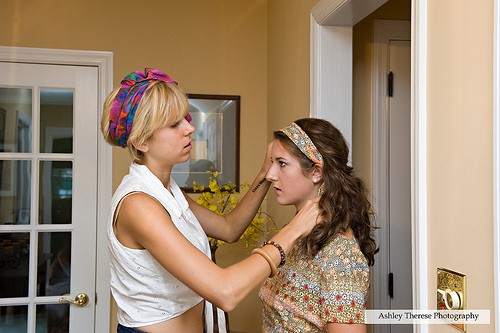
DON’T WORRY IF: Your wild card suggestions are an epic fail. It’s almost like training for an event and not coming in the place you were aiming for — while you fell short, you gave it all you got and you know that there wasn’t anything else you could do.
The worst part? You get to see an array of pieces on a human body. No matter the style or piece measurements, you just don’t know how something is going to look on the female form. Seeing it truly IS believing it.
When I’ve seen something on a body, I have more information to suggest to it’s next potential owner. I say, “I saw this dress on a girl last night and her body was so similar to yours, so this is definitely something you should give a shot!”
When the customer knows that the piece has a history and that you have the authority to use this history as suggesting power, they listen. Remember that your knowledge is your power — and the only way to communicate it is to gather the research you need, which is a key component of the “wild card” success story.
TIP #5: PRAISE, DON’T PUSH

THE TIP: If the piece fits, praise it! But never, ever push!
This is a number one most important rule to selling anything: Do not push a purchase you don’t fully believe in!!
To be a trustworthy person, your opinion — which inspires your suggestions — must be educated and valid. If I see a piece which looks fantastic on a customer for reasons A, B and C … I state those reasons! But I will never “create” reasons D, E, F to further push the purchase on that person. I will only state the praise I know and truly see. The rest — i.e. making the purchase itself — is up to the customer.
WHY IT HELPS: To create a connection that lasts and isn’t just temporary when the customer is in the store, you need to truly sell that which you know will remind them to return back for more shopping with you.
If your customer takes home a piece you pushed on them, and which they bought only because of your inaccurate praise and persuasion, they will undoubtedly realize in due time that it wasn’t a purchase meant for them. Whether a friend points it out or they realize on their own — it doesn’t matter. All that matters is that they’ll realize they don’t absolutely love the piece and will be left with a sour taste in their mouth when it comes to shopping at your store.
The key to successful business is not in driving a new customer base, but in inspiring a returning one. That way, you can keep faith that your returning customers are there to buy. You need less “conversion investment” in them because with their subsequent visits, they will feel more comfortable shopping and buying for themselves. This leaves you time to work on a higher-touch level with your new customers so that they may become returning customers, too.
The flower of returning & new customers creates an equilibrium in your business of financial stability. You never want to feel the urge to “push” a sale because you need to make a certain sales mark everyday.
Creating trust is what guarantees that your sales mark will be met time and time again — without you ever having to force it.
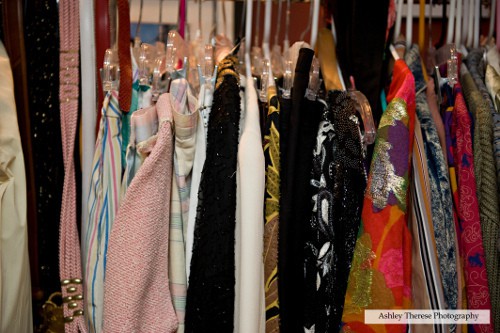
DON’T WORRY IF: Your praise is sincere, the price is right and the piece is perfection … yet the customer won’t buy it!
In the end, the number #1 reality of “not pushing” is realizing that you are not spending your customer’s dollars. They are! So if the customer isn’t inclined to purchase the piece no matter HOW perfect it is, you can’t be upset because you don’t know the other circumstances which may be preventing that purchase.
If the customer knows that she can come into your store, try on fabulous pieces and leave without buying anything and NOT feeling guilty … I promise she will return again. No one wants to feel bad about simply having fun in a store. I realize that there is a lot of time and investment placed on connecting with a new customer, and the reward most logically is a purchase, but remember that the purchase is immediate gratification.
The potential long term gratification is that the customer returns when she is ready to spend and spends A LOT, because you made her feel at ease about simply experiencing your store for the sake of experiencing it.
There is a great quote I remind myself when I feel that I am living in lack and not abundance. “Do not give for the reward of receiving, but the reward of giving itself.”
Just give … and what you receive will be tenfold what you ever imagined it to be.
MORE VINTAGE SELLING TIPS
PRICING: 7 Secrets to How to Price Vintage
MERCHANDISING: 5 Smart Tweaks for Successful Vintage Sales
MONEY: 10 Careers Involving Vintage Clothing
PART I: How to Tell It’s Vintage by Labels and Tags
PART I: The Secrets to Identifying the Era of Designer Vintage Tags
EDUCATION: 14 Books for Learning about Vintage Fashion

This is a great post, especially for those who sell vintage offline. Thank you for sharing!
the fashion tiger shoes outlet.
Great Tips! I love this post, these are the kind of salesperson’s that I love to interact w/when I go shopping. btw: can you do a tutorial on different ways to wear a head scarf? That would be fabulous! Thanks again Sammy!
Reyna
I loved reading this, Sammy. Thanks so much for another well written and positive post. It makes me want to go shopping with you again!!!